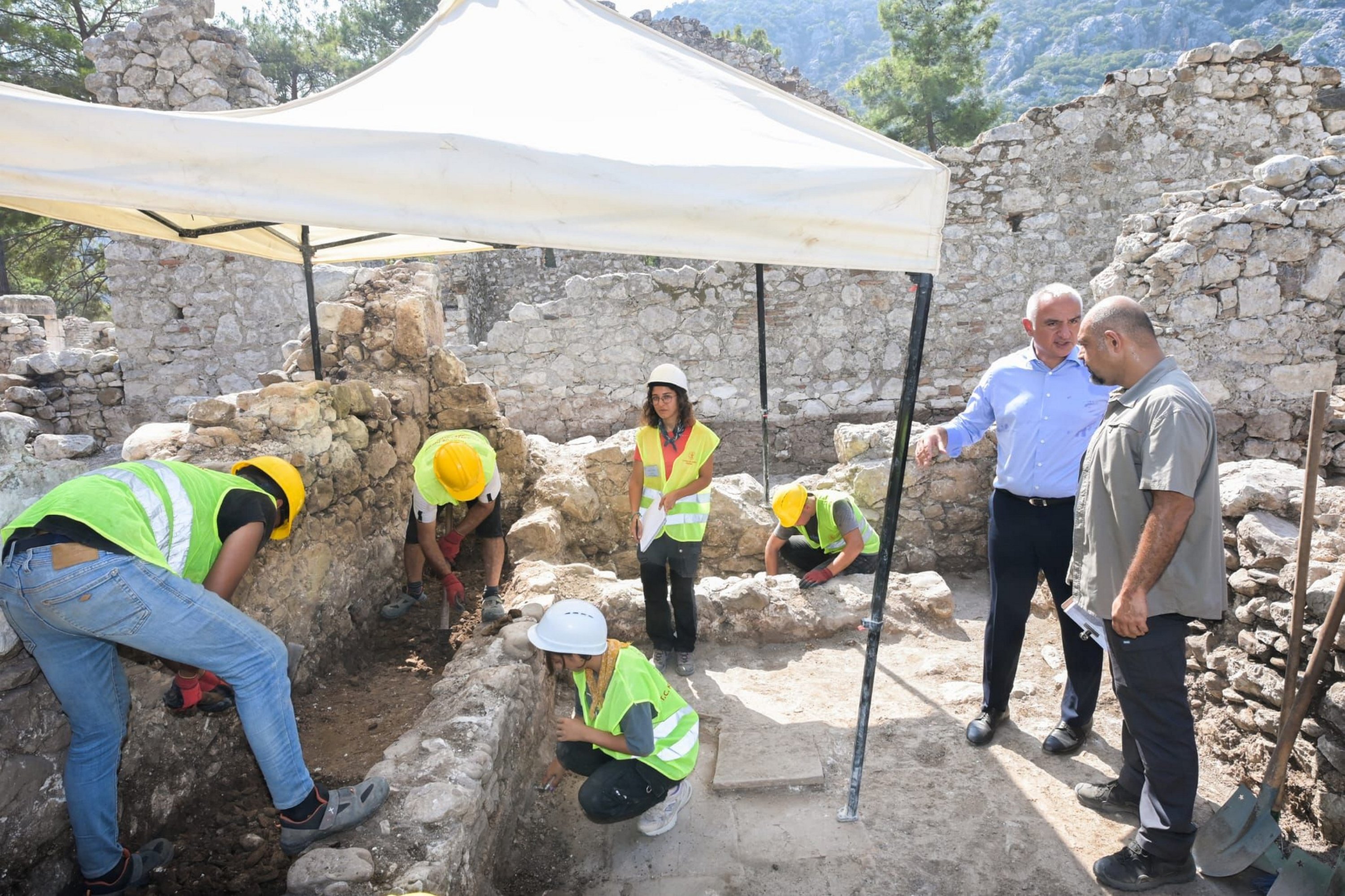© Turkuvaz Haberleşme ve Yayıncılık 2026
New findings have been discovered at the ancient city of Olympus, or Olympos, where excavation work continues in the Kumluca district of Antalya, Türkiye.
According to a statement from the Ministry of Culture and Tourism, the excavation and restoration work initiated in the new season has made the ancient city of Olympus an important center for mosaic floors in the Lycian region. Culture and Tourism Minister Mehmet Nuri Ersoy also conducted inspections at the ancient city, shedding light on the Lycian period.
Ersoy received information from the excavation's head, Gökçen Öztaşkın, about the work being carried out in the ancient city, which includes mosaics dating back to the A.D. third century, such as the tomb of Captain Eudemos mosaic, as well as mosaics from the A.D. fifth and sixth centuries.
Speaking with the excavation team, Ersoy emphasized that this year, the excavations conducted in Olympus will continue in 26 different locations, including new areas, and in the areas where excavations have been completed, restoration efforts will be implemented to revive the silhouette of the ancient city.

This season, excavations focused on the Episcopal Palace, church number three, monumental tombs in the harbor, the theater, the necropolis and North Harbor Street have revealed that mosaics in the “opus-tessellatum” technique featuring plant, geometric, animal and human figurative compositions are mostly preferred on the floors of the ancient city. Mosaics in the spaces surrounding the Episcopal Palace's "peristyle" have brought to light personifications such as the refrigerium scene, thalassa (sea), gaia (earth), ktisis (creation, founding), truphe (indulgence), kharis (grace, beauty) and apolausis (luxury).
At the entrance of church number three in Olympus, personifications of "andreia (courage)" and "dikaiosyne (justice)" were found.
Experts, estimating that the atrium of the church contains the personification of the “seven virtues,” have revealed a mosaic scene depicting a "lion hunt" on the floor of the vaulted burial chamber containing Captain Eudomos' sarcophagus in the monumental tombs by the harbor, and a ship entering a harbor at the entrance section of the burial chamber.
